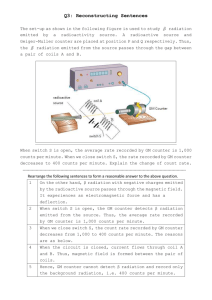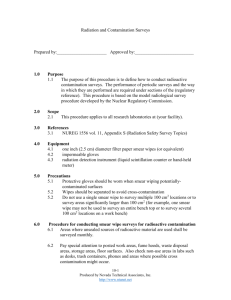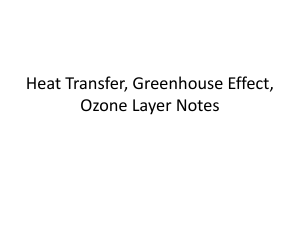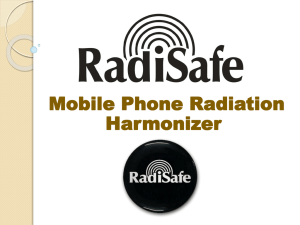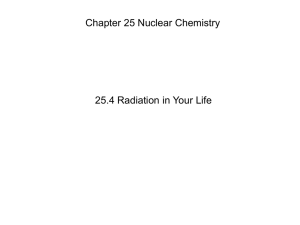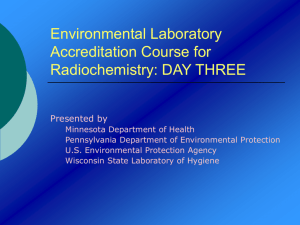Radiation Detection - Risk Management Services
advertisement
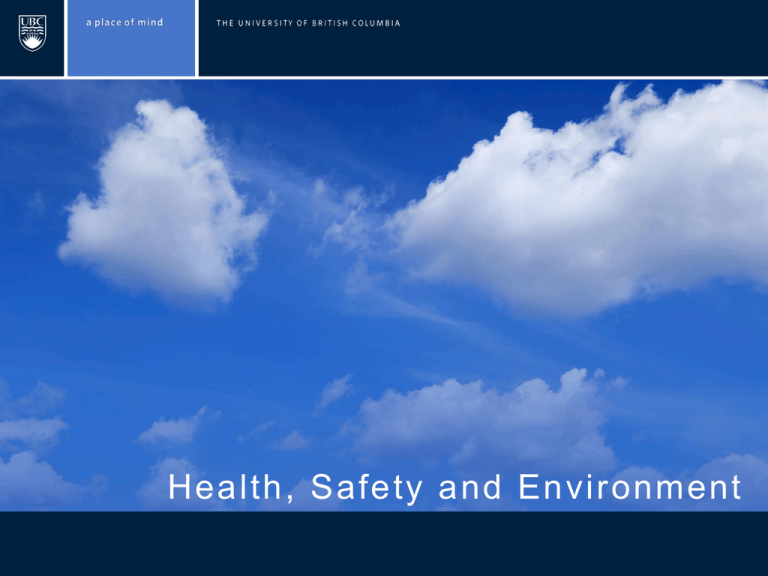
Health, Safety and Environment www.hse.ubc.ca Radiation Detection Systems 8. Laboratory Radiation Surveillance Direct Survey Meters • Geiger-Mueller • Scintillation Counter • Measure surfaces directly • Main use for contamination control Radiation Survey Meters Maintenance • Per use: – Battery power – Check source – Check background • Calibration: – Yearly – After maintenance or repairs Geiger-Meuller Tube Low Energy Gamma Scintillator (LEGS) Survey Instrument Comparison • Geiger-Muller – Detection through window – Detects rays (photons) – Detects a few particles – Shields allow differentiation between particles & photons – Designed to measure activity – Can be less sensitive to low counts • Scintillation Counter – Much more sensitive than Geiger-Muller – Widespread detection Indirect Survey Methods • Liquid Scintillation Counter • Gamma Counter • Wipe of surfaces • Detect contamination on wipes Gamma Counter No internal radioactive standard. May generate small, negative numbers when counting low activity samples: ie wipe tests. Wipe test criterion of 100 cpm above bkgnd still applies! Scintillation Counter Distintegrations Per Minute = Counts Per Minute / % Efficiency Scintillation Counter Distintegrations Per Minute = Counts Per Minute /Sample % Sample Efficiency 123 124 1000 cpm 800 cpm Eff=50% Eff=39% A ~ 2.22 MBq Activity / Calibration Amp Counter N N = Activity x (Efficiency x Geometry Factor) • A ~ 2.22x106 dps • Efficiency ~ 50 % • GF ~ 0.5 N= Activity / Calibration If you detect 555,000 cps, is the activity of the source 2.22 MBq? Consider other contributing factors : Radiation Sources in the Workplace 9. Radiation Protection Principles Radiation Transfer of energy, in the form of waves or particles, from one point in space to another point in space. • Time • Distance • Shielding • Contamination Control Time Minimize the time spent in a radiation field. Example: You are working in front of a fume hood where the field is 18 Sv/h. What is the dose you would receive after 90 minutes? after 10 minutes? Distance Inverse Square Law The radiation intensity, I, is proportional to one over the distance squared: 1 I 2 D The source is assumed to be small compared to the distance. Inverse-Square Law 4 1 0 1 9 2 3 If Iα 1 (D)2 What is the intensity at twice the distance? I1 = (D2)2 I2 (D1)2 Let D2 = 2D1 OR I2 = I1 (D1)2 / (D2)2 I2 = I1/(D1)2 / (2D1)2 I2 = I1 / 4 Distance Example At 10 cm you measure the field intensity to be 160 μSv/ h. What is the field intensity at 1 m? I1 = D1 = I2 = D2 = Shielding Material placed between yourself and the source will reduce your exposure to radiation. The amount of reduction will depend upon the material and the radiation. • Material density and thickness • Radiation type: α, β, γ, or x-ray • Radiation energy Half-value Layer 20 Sv/hr Half-value Layer Sv/hr Half-value Layer Sv/hr Half-value Layer Sv/hr Recommended Shielding • 32 P • 14 C Glass container Plexiglas • 125 I 1 mm Lead sheet • 99m Tc 12 mm Lead 12 mm Plexiglas Contamination Control Purpose is to ensure that all work and non-work surfaces do not pose a risk to health Survey Meter Wipe Test Combination Wipe tests Use filter paper/tissue etc. Wet with appropriate solvent. Standard surface area to cover is 100 cm2 for each wipe. Place in vial with scintillation cocktail, count. Always include a background. Action level for contamination is 100 cpm above bkgnd. Spurious counts may be due to static, or fluorescence not from radioactive source. Be suspect of zeroes! END DAY 1

